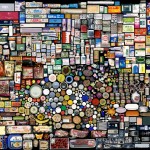Assignment 2 – The Hunger Project
“the surplus that is available for the giving of the gifts is the product of precisely the same system of production, exchange, and distribution that produces the poor who receive these gifts” (Stirrat & Henkel 80).
This concluding remark by Stirrat and Henkel captures the perpetual feast and famine written into the very configuration of our global industrial food system and the reasons for intervention driving innumerable aid agencies, intergovernmental and NGO alike, to combat the disparity. In particular, The Hunger Project acts as one link in the proverbial chain connecting aid pouring in from both individual ‘investments’ (i.e. gifts/donations) and greater intergovernmental organizations to the Global South.
The Hunger Project “works to break the cycle of poverty. We believe hungry people themselves are the key to ending hunger. In partnership, we unleash their vision, commitment and leadership so they can feed themselves and their families.” Entirely representative of the new orthodoxy in its rhetorical reliance on themes such as partnership, self-realization, and the central role that NGOs now occupy, the organization appeals to the ideology of the pure gift in its programmatic outline.
Beginning with ‘partnership’, the list of corporate sponsors ranges from international banks that had a hand in bringing about the global recession to fast food giants who skew the food system against the most marginalized. Partnerships such as these are steeped in problems not only with determining identity, but also authenticity of experience, and more particularly experiences of poverty. In these instances when giver and receiver are subsumed into relationships predicated on a conflation of the problem and its solution, answers to deeper questions of accountability that penetrate beyond rhetoric could hardly reflect the needs of the vulnerable. More pointedly, wherever the World Bank is involved, it would not be unfair to question what more insidious and constraining dynamics are driving (or polluting) the processes of giving.
Secondly, self-realization begs further consider the function of the gift: drawing from Carrier quoting Noonan’s prescription that “The more [the gift] reflects the donne’s interests and the donor’s tastes the better.” But in the case of aid, we find potentially unaligned interests and tastes. Though the original donor and the final recipient might ultimately be concerned with the security of the latter, the web between them prioritizes expertise above material goods. This is especially problematic when access to the goods and services they are systematically disenfranchised from is again denied. In jumping to self-realization before securing access to such necessities, those drivers of discourse seem to forget Maslow.
The Hunger Project’s microfinance programs, again assessed under the rubric of self-realization, though perhaps offering the opportunity to equalize giver and receiver in a way charity never can, ultimately—and problematically—require a particular understanding of morality that lends itself so easily to the perpetuation of neoliberalism that created unequal givers and receivers: “Moral behavior, then is free and unconstrained, for it is in freedom that the moral sense is best able to operate. And from this it is only a small step to the argument that free and unconstrained acts are good, with the inverse that constraint, external regulation, is bad” (Carrier 32). It’s quite incredible how the market via governance is consistently able to position itself as the legitimate solution to the perceived ineptitudes of governments (env. certification).
Finally, in aligning itself with the upcoming SDGs, The Hunger Project is positioning itself to not only “[take] over obligations traditionally performed by government agencies as distributors and administrators of development funds but also [act] as organizers of whole sectors” (Stirrat & Henkel 68). Further realizing how aid relations reify boundaries between givers and receivers,, if we are to consider this statement in spatial terms, the displacement of existing institutions reveals the incongruity of calls for self-realization, since NGOs monopolize those very institutions representing the highest expression of self-realization.
I also had one general (but incomplete) thought about microfinance as related to Carrier’s statement that the “first element of the ideology is that the perfect gift is priceless, that its material expression is immaterial 23): Sure, the perfect gift is priceless, and we can argue that money in this case is and is not price, but perhaps money can also be complicated as a symbol of security in liquid form beyond numerical value. perhaps there are not just things and persons under consideration but states of being… (which could then be extrapolated to conceptions of personhood and Hegel’s three states of recognition or the creation of the neoliberal individual)…






